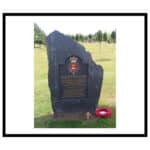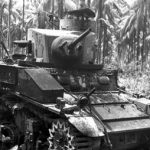The 1936 Arab revolt in Palestine, was an uprising by Palestinian Arabs in Mandatory Palestine against the British administration of the Palestine Mandate, demanding Arab independence and the end of the policy of open-ended Jewish immigration and land purchases with the stated goal of establishing a “Jewish National Home”.
The dissent was directly influenced by the Qassamite rebellion, following the killing of Sheikh Izz ad-Din al-Qassam in 1935, as well as the declaration by Hajj Amin al-Husseini of 16 May 1936 as ‘Palestine Day’ and calling for a General Strike.
The revolt was branded by many in the Jewish Yishuv as “immoral and terroristic”, often comparing it to fascism and Nazism. Ben Gurion, however, described Arab causes as fear of growing Jewish economic power, opposition to mass Jewish immigration and fear of the English identification with Zionism.
Qassam organized and established the Black Hand, an anti-Zionist and anti-British militant organization. He recruited and arranged military training for peasants and by 1935 he had enlisted between 200 and 800 men. They were engaged in a campaign of vandalizing trees planted by farmers and British-constructed rail lines.
In November 1935, two of his men engaged in a firefight with the Palestine Police patrol hunting fruit thieves and a policeman was killed. Following the incident, the police launched a manhunt and surrounded al-Qassam in a cave near Ya’bad. In the ensuing battle, al-Qassam was killed.
The death of al-Qassam generated widespread outrage among Palestinian Arabs. Huge crowds accompanied Qassam’s body to his grave in Haifa.
The dissent in Palestine was influenced also by the discovery in October 1935 at the port of Jaffa of a large arms shipment destined for the Haganah, sparking Arab fears of a Jewish military takeover of Palestine, Jewish immigration also peaked in 1935, just months before Palestinian Arabs began a full-scale, nationwide revolt.
In the four years between 1933 and 1936 more than 164,000 Jewish immigrants arrived in Palestine, and between 1931 and 1936 the Jewish population more than doubled from 175,000 to 370,000 people, increasing the Jewish population share from 17% to 27%, and bringing about a significant deterioration in relations between Palestinian Arabs and Jews.
The uprising began with the 1936 Anabta shooting, on the 15th of April at a roadblock that stopped a convoy of trucks on the Nablus to Tulkarm road during which the (probably Qassamite) assailants shot two Jewish drivers, Israel Khazan, who was killed instantly, and Zvi Dannenberg, who died five days later. The next day members of the militant Jewish faction, the Irgun, shot and killed two Arab workers sleeping in a hut near Petah Tikva in a revenge attack.
The funeral for Khazan in Tel Aviv on the 17th of April attracted a huge crowd, and some Jews beat up Arab bystanders and destroyed property. This was followed by the Bloody Day in Jaffa, in which an Arab mob rampaged through a residential area killing Jews and destroying property. An Arab general strike and revolt ensued that lasted until October 1936.
During the summer of that year, thousands of Jewish-farmed acres and orchards were destroyed, Jewish civilians were attacked and murdered, and some Jewish communities, such as those in Beisan and Acre, fled to safer areas.
The 8th King’s Royal Irish Hussars would be deployed from Egypt to support the Palestinian Police in a bid to enforce peace between the Arabs and Jewish settlers. Throughout 1936 and into 1937 the 8th Hussars would Patrol the length and breadth of the Holy Land.
It was quickly evident that the only way to regain the initiative from the rebels was by initiating measures against the villagers from which the rebels and saboteurs came. The Regiment initiated, in co-operation with the Police, village searches. Ostensibly, these searches were undertaken to find arms and wanted persons, actually the measures adopted by the Army and Police were punitive and effective.
The General Strike was called off in April 1937 and the Regiment retuned to Egypt as a greater threat was growing to the South and West.



